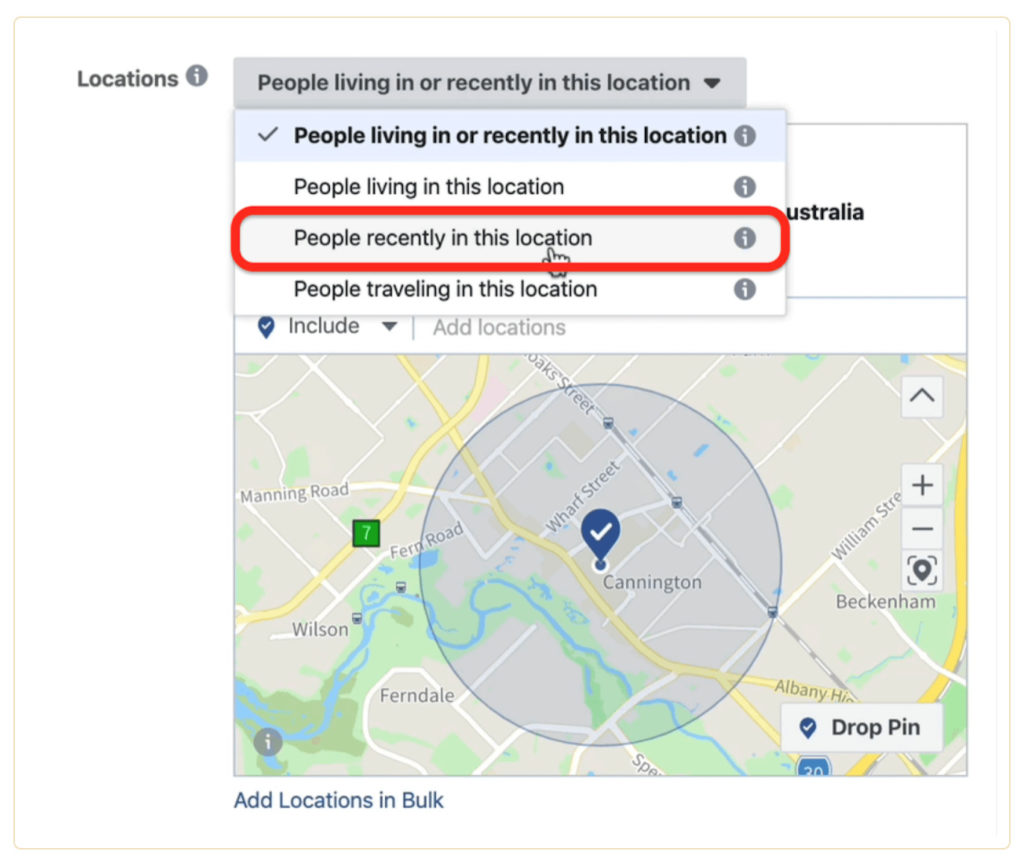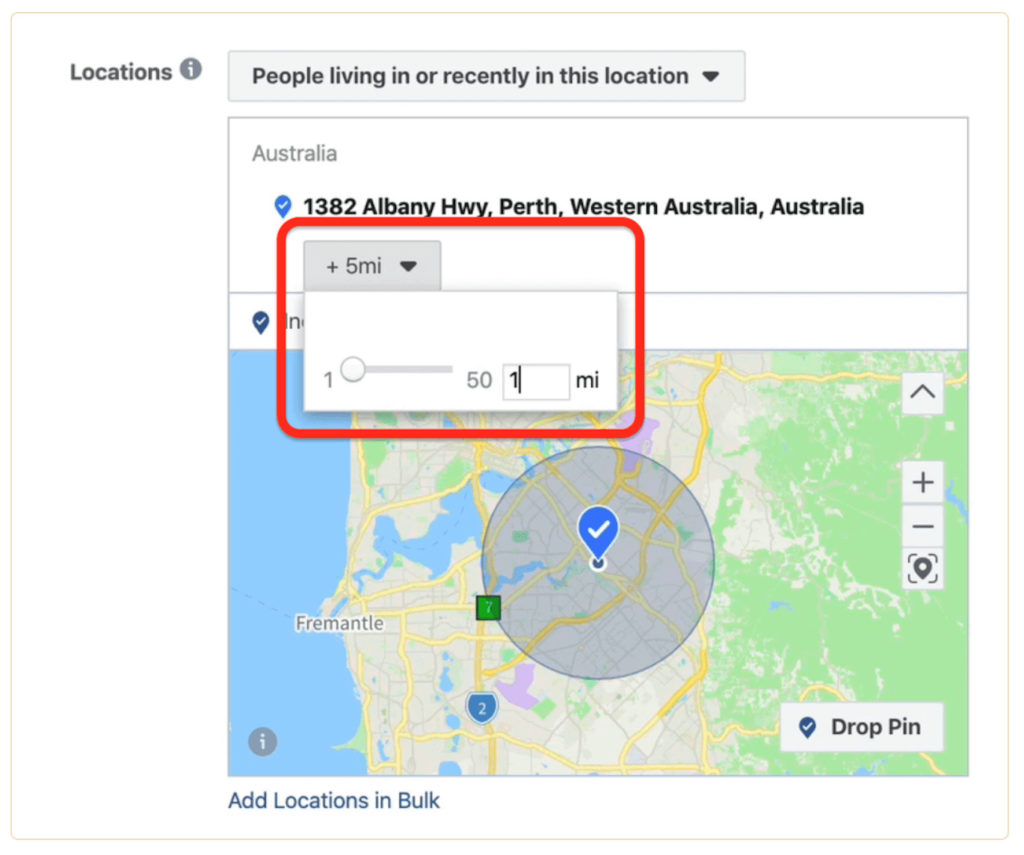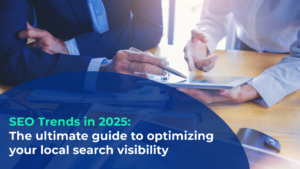Due to the many features available, a platform like Facebook Business Manager can quickly become complex in the management of digital campaigns. It is difficult for store owners or retailer network owners to find time to familiarize themselves with such platforms. This is why Facebook offers them the possibility to easily create local campaigns, a format that meets their needs.
Indeed, this digital advertising format allows physical retailers to promote their services and products to potential customers located in a nearby geographic area. Local campaigns satisfy physical stores’ need to bring customers on-site.
In this article, discover:
- The specificity of local Facebook campaigns
- The various “local” Facebook advertising formats
- The construction of a local Facebook campaign
- Our recommendations
1. The specificity of local Facebook campaigns
Facebook offers a “Store Visits” feature in its campaign objectives. By identifying this campaign goal, Facebook ads will appear on the Facebook and Instagram pages of people with an interesting profile for the brand and who are close to the point of sale. By doing so, Facebook attracts the attention of prospective customers to the services and products offered at the store.
A local campaign is very useful in reaching potential customers as it increases the online visibility of the point(s) of sale. Reaching new customers is usually complicated. This is why it is interesting to be on a platform such as Facebook which represented about 2.7 billion active users in 2020 (source: Statista, 2020). Also, don’t forget that Facebook also owns Instagram, Facebook Messenger and Whatsapp! The Facebook network has managed to collect billions of user data, thereby allowing the creation of highly targeted campaigns.
Indeed, the real power of Facebook is to be able to refine the audience of your local campaign based on age, gender and other variables such as specific interests or behaviours. It is therefore an extremely interesting tool when you deeply know the profile of your customers. It is however recommended not to be overly specific in demographic parameters at the risk of reducing your audience.
In addition, the Facebook Ads Manager platform provides an extremely complete reporting on the visibility of your campaign. In addition to information such as CPR (“cost per rating point”), CPM (“cost per mille”), CPC (“cost per click”) and average daily costs, the platform also indicates the reactivity rate by demographic section such as gender, age or location. For more information, visit Facebook Business.
2. The various local Facebook advertising formats
Facebook offers many different ad formats depending on the type of message you want to convey. However, with the “Store Traffic” option as the campaign objective, the options are limited to Facebook and Instagram Feed (the basic interface of these two networks) or Stories (special interface with zoom on posted content).
For these 4 options, it is possible to publish:
- An image: the simplest format with an image and a direct link to invite people to discover the address, products or services, etc.

- A video: an interactive format that attracts the eye. It is useful for detailing the message more in-depth. Also contains a link to bring the customer to a digital interface giving useful information to get to the site

- A carousel: a set of photos that shows a set of products, a suite of messages or others. It is very useful if the brand wants to show new products or a new campaign for example.
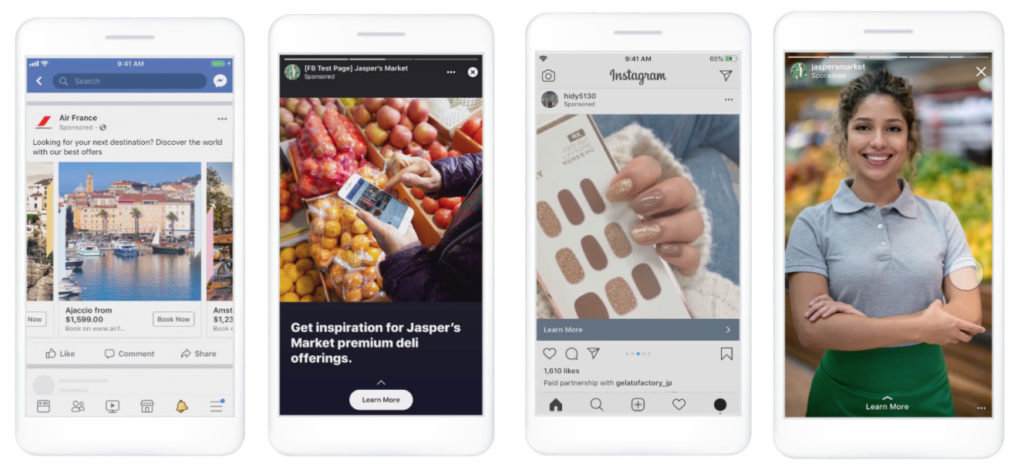
- A collection: This format includes a cover image or video of product images (4 product images for Facebook and 3 for Instagram). Please note that the carousel format is not possible in Facebook stories with the store visits goal! An “instant experience” link allows this format to redirect to a full screen landing page when the ad is clicked. This makes it possible to communicate a collection launch or promote a set of products belonging to the same collection.
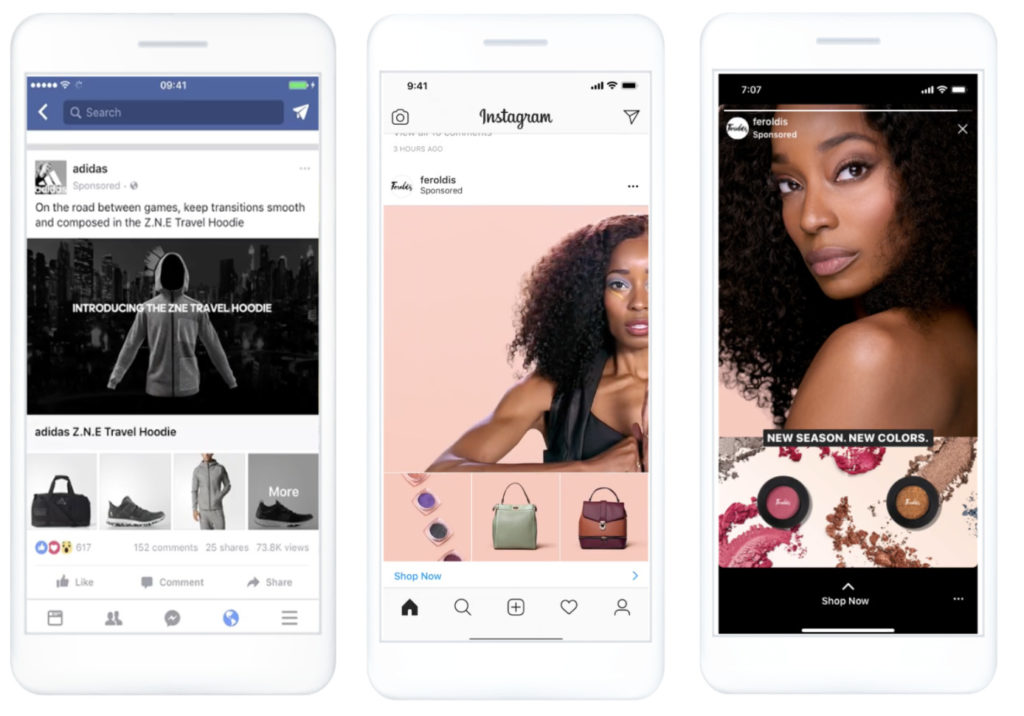
In addition to the generic formats described above, Facebook offers specific formats. Two formats stand out for retail networks:
- Facebook Dynamic Product Ads: This format will automatically showcase specific products to the people who have expressed interest in your company on the internet. The set up of the campaign and the upload of the resources are required once. Facebook will then make sure to find the correct prospect for a certain product.
- Facebook Lead Ads: This format allows to collect information on prospects using instant forms. Someone interested in your services or products will be directly directed to the form where they can fill in their name, email address, phone number and more. There is the possibility to include custom questions that may be more specific to your industry and your business goals.

3. The construction of a local Facebook campaign
To build a Facebook campaign you must first have a Facebook Places page (local page for shops). It’s important to have your local Facebook page well integrated into Facebook Business Manager to link it to your campaign. If you have already done so, you can go directly to Facebook ads Manager to create your local campaign.
Generally speaking, the easiest way to create a campaign is to sponsor an existing post on the Facebook store page. To do this, simply select the “boost publication” option of the post you want to promote. Then you will go through the steps of campaign creation: goal, audience, budget, duration and placement. This ad format is very useful for promoting organic content that brings you closer to your audience. Indeed, this type of advertising is often used to share immersive content from your brand’s daily life. By doing so, you also increase your visibility beyond your existing subscribers.
- Choose your campaign objectives:
In Facebook ads manager, click “create” in the “campaign” tab. Facebook offers 11 different campaign objectives. Check out this facebook ressource page to learn more about these different goals. In the case of retail chains, the aim of the point of sales will be “Store Visits”.
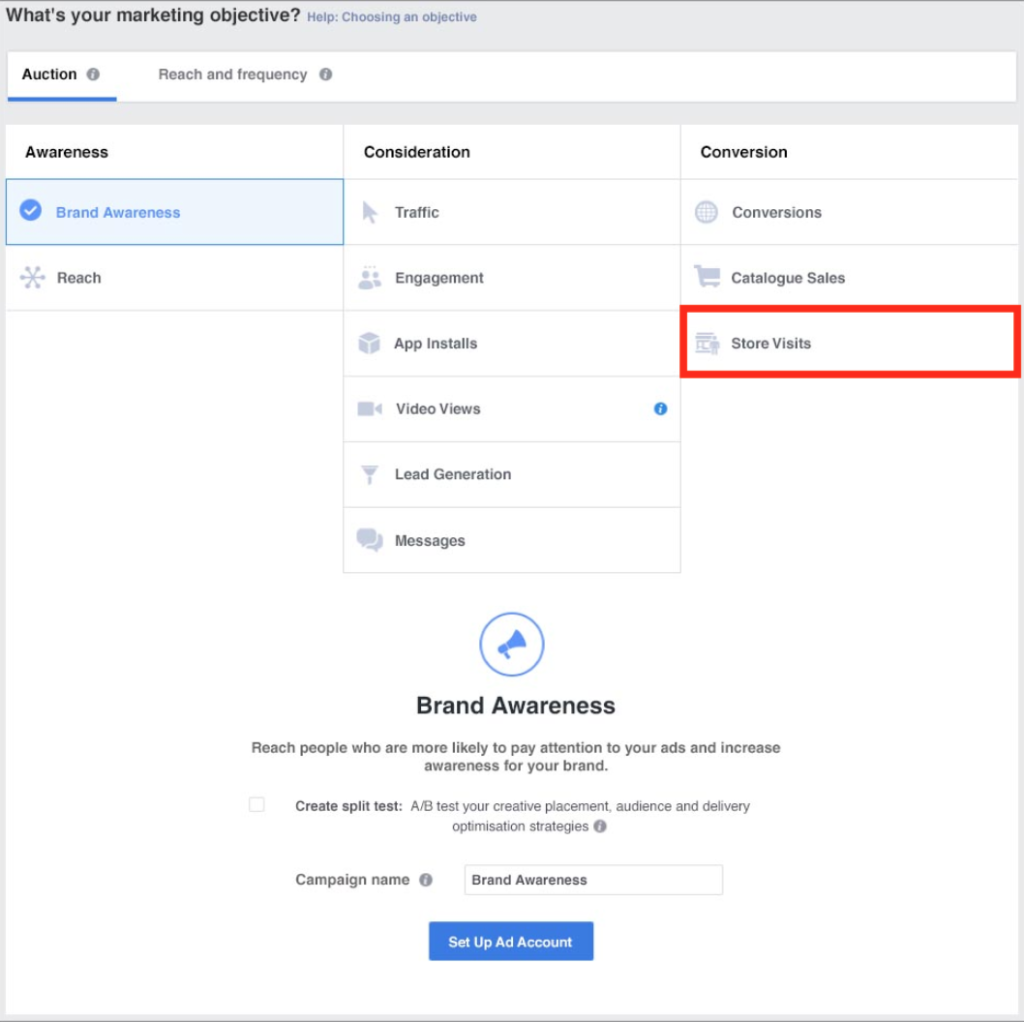
2. Define your audience:
The next step is to define your audience by placing general demographic variables: in the “places” section, it is interesting for retail networks to use the option “People recently in this location” to target people in the vicinity of the point of sale. It is possible to expand the targeting radius around the store.
In addition, if your target audience is more specific, it is also possible to refine the audience with the “advanced targeting” interface. This tab gives a multitude of specific variables that are interesting to explore.
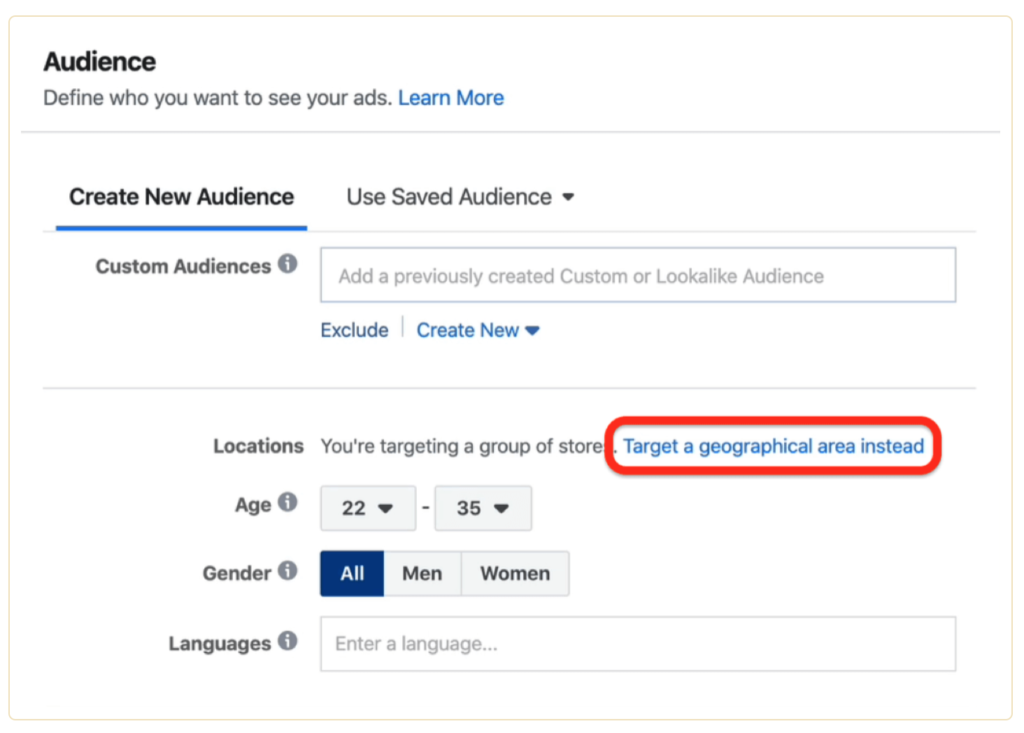
The power of Facebook is that the platform is extremely complete through its massive collection of user data. It’s a very interesting tool because it allows companies to fine-tune their audiences. You are invited to walk through the entire local campaign creation interface to see all possible variables.
Beforehand, we recommend analyzing your target audience with the “Facebook Audience Insight” tool which is a real gold mine to get to know your audience profile. In this tool, it is possible to associate a brand type resembling your brand or to see the pages visited for a specific audience.
3. Choose your campaign placements:
After that, you will have to choose the locations in which the advertisement will be placed. As explained above, for the “in-store traffic” campaign objective, sites are limited to Facebook feed and stories and Instagram feed and stories. You will then have to upload the images and/or videos contents and the texts prepared beforehand.
4. Specify the budget and schedule:
You have two possibilities when setting the budget of your campaign: you can choose a daily budget or a total budget. Keep in mind that it is more economical to place a total budget because the campaign will only be served when your target audience is most likely to be on Facebook. After choosing your budget, it is then possible to set a beginning and ending date for your campaign. If you don’t wish to set a time limit, it is also possible not to set a date
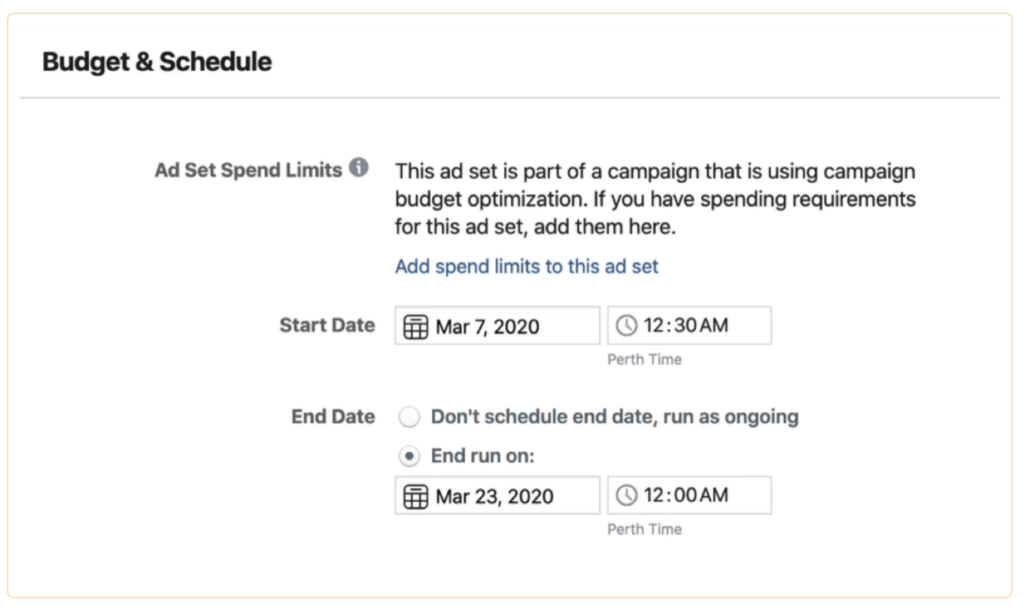
5. Choose the campaign format:
Finally, it’s time to select the format used for your campaign. As explained above, you will be able to use different formats depending on your campaign goal.
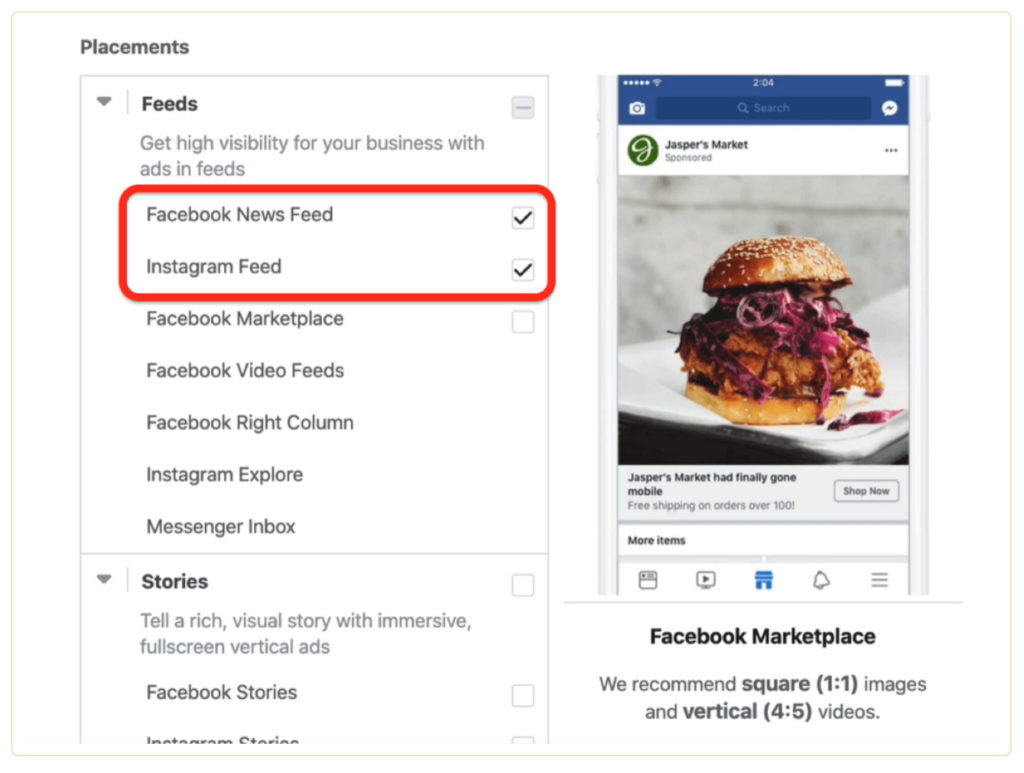
4. Our recommendations
- Keep in mind format sizes: When creating content such as your images, texts and videos, it is important to keep in mind size, quality and other variables. Here is an article that will give you all the necessary measures.
- Test different types of content and audience: We advise you to test different types of content for your campaigns. For example, a more sustained language may produce fewer results than a more accessible language. On the other hand, an audience that is too focused reduces the conversion rates. Make sure to identify the content that best affects your audience by installing A/B testing. For more info check out these Facebook recommendations.
- Follow local campaign trends: we also advise you to follow the trend of digital campaigns. To learn more, here is an article with the 2021 trends!
- Using Facebook Pixel: It is advised to use Facebook pixel; a part of code to insert in your website that allows you to track online conversions and analyze in detail the audience that is of interest to you. You will be able to compare the rate of visits online and on-site. Check out these Facebook recommendations.
- Track and optimize your campaign: It is possible that one campaign works less well than another. In this case, try to identify which variables were the cause. If you’re starting out, it is interesting to shoot several low-budget campaigns to see what works best for you.
Facebook is a very complete tool that is overall interesting for companies that know their target well. For this tool, it is therefore important to work beforehand on a local Facebook campaign strategy. When you are familiar with the platform, this intuitive tool is very useful in terms of targeting accuracy.
Consult other articles on the subject…

